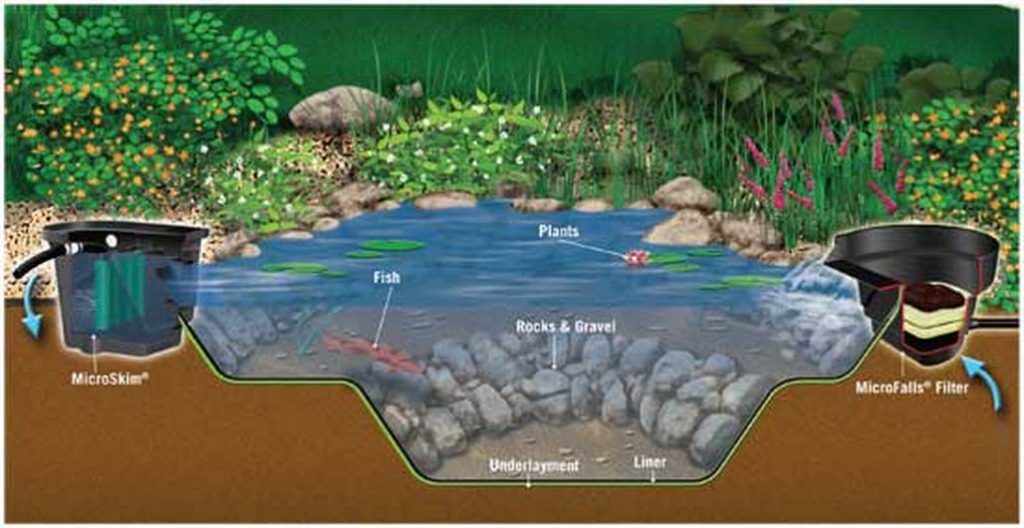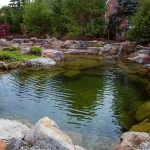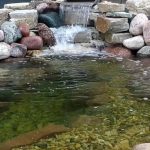When it comes to creating a fish pond, one of the most important considerations is the depth of the pond. The depth of a fish pond plays a crucial role in determining the overall health and well-being of the fish living in it. But how deep should a fish pond be? Let’s dive into this topic and explore the factors that influence the ideal depth for a fish pond.
Factors to Consider
Several factors should be taken into account when determining the depth of a fish pond. These factors include the type of fish you plan to keep, the climate of your region, and the overall size of the pond. Let’s take a closer look at each of these factors.
Type Of Fish
The type of fish you intend to keep in your pond will greatly influence the depth requirements. Different fish species have varying preferences when it comes to water depth. For example, Koi fish prefer deeper ponds with depths of at least 3 feet to 4 feet to thrive, while goldfish can do well in shallower ponds with depths of around 2 feet.
Climate
The climate of your region also plays a significant role in determining the ideal depth of your fish pond. In colder climates, deeper ponds are preferable as they provide more stable water temperatures, which are crucial for the health of the fish, especially during winter months. In warmer climates, shallower ponds can be suitable, but adequate depth is still essential to prevent overheating of the water.
Pond Size
The size of your pond is another important factor to consider when determining the depth. Larger ponds generally require greater depth to ensure proper circulation of water and to accommodate a larger population of fish. Smaller ponds can get by with shallower depths, but it’s essential to strike a balance to provide enough space for the fish to swim and thrive.

Credit: cartersgarden.wordpress.com
Benefits of Different Depths
Now that we’ve covered the factors influencing pond depth, let’s explore the benefits of different depths for fish ponds.
Shallow Ponds
Shallow ponds, typically ranging from 1 to 2 feet in depth, have their advantages. They are easier to maintain, as sunlight can penetrate deeper, promoting the growth of aquatic plants that provide oxygen and natural filtration. Shallow ponds also tend to warm up more quickly, which can be beneficial in cooler climates.
Moderate Depth
Ponds with moderate depths, around 3 to 4 feet, offer a balance between shallow and deep ponds. They provide a suitable environment for a wide range of fish species and promote better water quality due to increased oxygen levels and circulation. Moderate-depth ponds also offer more stability in water temperature, which is crucial for the overall health of the fish.
Deep Ponds
Deep ponds, with depths exceeding 5 feet, are ideal for certain fish species that require ample space to swim and thrive. Deep ponds offer more stable water temperatures throughout the year and provide a sanctuary for fish during extreme weather conditions. Additionally, deep ponds can support a larger population of fish and offer more room for natural filtration systems to thrive.

Credit: atlantiswatergardens.com
General Guidelines for Pond Depth
While the ideal depth of a fish pond will vary depending on the factors mentioned earlier, here are some general guidelines to consider:
- For Koi fish or larger species, aim for a depth of at least 3 to 4 feet.
- For goldfish or smaller fish, a depth of 2 to 3 feet may suffice.
- Ensure a minimum depth of 18 inches to prevent water from freezing solid during winter.
- Consider the overall size and shape of the pond to provide adequate space for the fish to swim and grow.
Conclusion
When designing a fish pond, the depth is a critical factor that can significantly impact the health and well-being of the fish. By considering the type of fish, climate, and pond size, you can determine the ideal depth that will create a thriving ecosystem for your aquatic friends. Whether you opt for a shallow, moderate, or deep pond, ensuring proper depth is essential for the long-term success of your fish pond.
Remember, each fish species has its own requirements, so it’s essential to research and plan accordingly to provide the best possible environment for your fish to flourish. With the right depth and proper care, your fish pond can become a beautiful and sustainable aquatic habitat for years to come.





